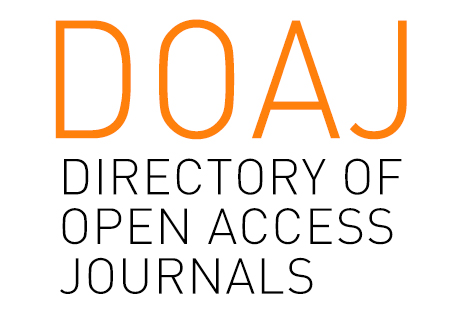Factors associated with eating behavior of young-old and oldest-old people from Southern Brazil
DOI:
https://doi.org/10.17765/2176-9206.2021v14Supl.1.e9298Keywords:
Aging, Aged, 80 and over, Appetite, Eating Behavior, Frail elderlyAbstract
The objective of this cross-sectional study with 6974 old people was to characterize the eating behavior of the young-old and oldest-old determined by the functional difficulty of eating by oneself, self-perception of appetite and number of daily meals, analyzed by the Poisson regression model. Young-old people feed more easily by themselves and had better self-perception of appetite; the oldest-old ones had more daily meals. In the adjusted analysis, poor self-perception of appetite was related with poor self-perception of general health among younger elderly, and being a woman among the oldest-old ones. Younger elderly presented, as a positive predictive factor the number of meals, leaving home and having adequate weight and no chronic disease. Among the oldest-old ones, leaving home was a negative predictor of the number of meals. Thus, the determining factors for worse eating behavior were being oldest-old, living without a partner, poor self-rated health and oral health.Downloads
References
1. Instituto Brasileiro de Geografia e Estatística. Pesquisa nacional por amostra de domicílios: síntese de indicadores 2015 (PNAD). Rio de Janeiro: IBGE; 2016. 108p. [acesso em 10 Julho 2017]. Disponível em: http://biblioteca.ibge.gov.br/visualizacao/livros/liv98887.pdf.
2. United Nations, Department of Economic and Social Affairs, Population Division . World Population Prospects 2019: Highlights. New York: United Nations. [acesso em 05 de maio 2020]. Disponível em: https://www.un.org/development/desa/pd/sites/www.un.org.development.desa.pd/files/files/documents/2020/Jan/wpp2019_highlights.pdf.
3. Reis C, Barbosa LMLH, Pimentel VP. O desafio do envelhecimento populacional na perspectiva sistêmica da saúde. BNDES Setorial. 2016;1(44):87-124.
4. Navarro JHN, Andrade FP, Paiva TS, Silva DO, Gessinger CF, Bós ÂJG. Percepção dos idosos jovens e longevos gaúchos quanto aos espaços públicos em que vivem. Ciênc saúde coletiva. 2015;20(2):461-470.
5. Medeiros VD, Noleto WS, de Melo MGS, Silva TCD, Silva PT, Castro SFC. A percepção do idoso sobre a velhice. Rev enferm UFPE. 2016;10(10):3851-9.
6. Lee SB, Oh JH, Park JH, Choi SP, Wee JH. Differences in youngest-old, middleold, and oldest-old patients who visit the emergency department. Clin Exp Emerg Med. 2018;5(4):249-255.
7. Word Health Organization [Internet]. Ageing and health. 2017 [acesso em 03 ago. 2020]. Disponível em: https://www.who.int/news-room/fact-sheets/detail/ageing-and-health.
8. Hosseini Shokouh SM, Arab M, Emamgholipour S, Rashidian A, Montazeri A, Zaboli R. Conceptual Models of Social Determinants of Health: A Narrative Review. Iran J Public Health. 2017;46(4):435-446.
9. Shlisky J, Bloom DE, Beaudreault AR, Tucker KL, Keller HH, Freund-Levi Y et al. Nutritional Considerations for Healthy Aging and Reduction in Age-Related Chronic Disease. Adv Nutr. 2017;8(1):17-26.
10. Gomes AP, Bierhals IO, Vieira LS, Soares ALG, Flores TR, Assunção MCF et al. Padrões alimentares de idosos e seus determinantes: estudo de base populacional no sul do Brasil. Ciênc saúde coletiva. 2020;25(6):1999-2008.
11. Alvarenga M. Fundamentos teóricos sobre análise e mudança de comportamento. In: Alvarenga M et al. Nutrição comportamental. 1. ed. Barueri, SP: Manole, 2015.
12. Quaioti TCB, Almeida SS. Determinantes psicobiológicos do comportamento alimentar: uma ênfase em fatores ambientais que contribuem para obesidade. Psicologia USP. 2006;17, p. 193-211.
13. Bós AJG, Mirandola AR, Lewandowski A, Schirmer CL. Perfil dos idosos do Rio Grande do Sul. 1 ed. Porto alegre, 2015. 356 p.
14. Morsch P, Pereira GN, Navarro JHN, Trevisan MD, Lopes DGC, Bós AJG. Características clínicas e sociais determinantes para o idoso sair de casa. Cad Saúde Pública. 2015;31(5):1025-1034.
15. Cauduro A, Bós AJG, Cauduro MHF. Fatores associados a morar sozinho e suas diferenças regionais em idosos residentes de Porto Alegre e Manaus. Estud. interdiscipl envelhec. 2013;18(2):349-365.
16. Organización Panamericana de la Salud. XXXVI Reunión del Comitê Asesor de Ivestigaciones en Salud – Encuestra Multicêntrica – Salud Beinestar y Envejecimeiento (SABE) en América Latina e el Caribe. Kingston, Jamaica. 2001 Jul. [acesso em 15 de maio 2019]. Disponível em: http://envejecimiento.csic.es/documentos/documentos/paho-salud-01.pdf.
17. Matos FS, Jesus CS, Carneiro JAO, Coqueiro RS, Fernandes MH, Brito TA. Redução da capacidade funcional de idosos residentes em comunidade: estudo longitudinal. Ciência & Saúde Coletiva. 2018;23(10):3393-3401.
18. Aguiar BM, Silva PO, Vieira MA, Costa FM, Carneiro JA. Avaliação da incapacidade funcional e fatores associados em idosos. Rev Bras Geriatr Gerontol. 2019;22(2):e180163.
19. Arganini C, Sinesio F. Chemosensory impairment does not diminish eating pleasure and appetite in independently living older adults. Maturitas. 2015;82:241–244.
20. Assumpção D, Domene SMA, Fisberg RM, Barros MBA. Qualidade da dieta e fatores associados entre idosos: estudo de base populacional em Campinas, São Paulo, Brasil Cad Saúde Pública. 2014;30(8):1680-1694.
21. Silva LO, Coronago VMMO. Etnografia de Idosos que moram sozinhos: desafios e possibilidades. Id on Line Rev. Psic. 2016;10(32):3-17.
22. Mota TA, Alves MB, Silva VA, Oliveira FA, Brito PMC, Silva RS. Fatores associados à capacidade funcional de pessoas idosas com hipertensão e/ou diabetes mellitus. Escola Anna Nery. 2020;24(1):1-7.
23. Campos ACV, Ferreira EF, Vargas AMD, Gonçalves LHT. Perfil do envelhecimento saudável de idosos brasileiros octogenários. Rev Latino-Am. Enfermagem. 2016; 24:e2724.
24. Dallasta TC, Medina VB, Dallepiane LB. Quality of life related to oral health among the elderly of a socialization group. O Mundo da Saúde. 2019;43(2):418-437.
25. Shigli K, Hebbal M. Does prosthodontic rehabilitation change the eating patterns among completely edentulous patients? Gerontology. 2012;29:48-53.
26. Torres LHN, Silva DD, Neri AL, Hilgert JB, Hugo FN, Souza MLR. Association between underweight and overweight/obesity with oral health among independently living Brazilian elderly. Nutrition. 2013; 29(1):152–157.
27. Oliveira GG, Pinho MS, Bós AJG. Desempenho de longevos caidores e não caidores na avaliação do Timed up and go utilizando um aplicativo de smartphone. Saúde e Pesqui. 2019;12(2):385-397.
28. Simões CCS. Breve histórico do processo demográfico. In: Figueiredo AH, organizadora. Brasil: uma visão geográfica e ambiental no início do século XXI. Rio de Janeiro: Editora IBGE, Coordenação de Geografia; 2016. p. 39-73.
Additional Files
Published
How to Cite
Issue
Section
License
A submissão de originais para a revista Saúde e Pesquisa implica na transferência da Carta Concessão de Direitos Autorais, pelos autores, dos direitos de publicação digital para a revista após serem informados do aceite de publicação.A Secretaria Editorial irá fornecer da um modelo de Carta de Concessão de Direitos Autorais, indicando o cumprimento integral de princípios éticos e legislação específica. Os direitos autorais dos artigos publicados nesta revista são de direito do autor, com direitos da revista sobre a primeira publicação. Os autores somente poderão utilizar os mesmos resultados em outras publicações, indicando claramente a revista Saúde e Pesquisa como o meio da publicação original. Em virtude de tratar-se de um periódico de acesso aberto, é permitido o uso gratuito dos artigos, principalmente em aplicações educacionais e científicas, desde que citada a fonte. A Saúde e Pesquisa adota a licença Creative Commons Attribution 4.0 International.
A revista se reserva o direito de efetuar, nos originais, alterações de ordem normativa, ortográfica e gramatical, com vistas a manter o padrão culto da língua e a credibilidade do veículo. Respeitará, no entanto, o estilo de escrever dos autores. Alterações, correções ou sugestões de ordem conceitual serão encaminhadas aos autores, quando necessário. Nesses casos, os artigos, depois de adequados, deverão ser submetidos a nova apreciação. As opiniões emitidas pelos autores dos artigos são de sua exclusiva responsabilidade.

















